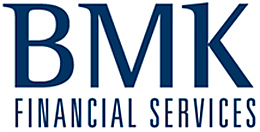Retirement Planning – Newcastle Investments
Retirees and those nearing retirement have learned the hard way the importance of holding a portion of their nest egg in low-risk fixed income investments. During the financial crisis cash and bonds not only outperformed shares and property, they helped investors protect their capital and pay the bills.1
Now that interest rates on most term deposits are below four percent 2 and the official cash rate is at record lows, the challenge is to find a decent yield without taking on too much risk.
The golden rule with all fixed interest investments is that the higher the interest rate, the higher the risk. While all investment involves some level of risk, it is important to understand your own risk tolerance so you can hold an investment portfolio that allows you to sleep at night.
Australian government bonds with their world-beating AAA credit rating are in a league of their own for investors with zero tolerance for any loss of capital.3 The trade-off is the relatively low rates of interest paid on these investments. In recent months, the yield on 10-year government bonds has hovered just above 4 per cent.4
Planning ahead – How bonds work
A bond is a security that pays a set rate of interest (the coupon) for given period of time (the term) and repays your initial investment at maturity. Unlike shares, which provide a share of ownership of a company, a bond is a loan from you the investor to the issuer of the security.
Returns from Australian government bonds are considered ‘risk-free’ and for this reason they are the benchmark against which all investment returns are measured. The same goes for term deposits and savings accounts which are government guaranteed for amounts up to $250,000.
While it is true that investors’ capital is not at risk of loss if invested in Australian government bonds for their investment term, they are not totally risk free. The main risk is a rise in interest rates.
If interest rates rise, bond prices fall because investors can get a better yield on new issues. If rates fall then bond prices rise. This means it is possible to make a profit or a loss by selling bonds on the secondary market. However, if you hold your bond to maturity you receive your initial investment back in full. In other words, your capital is guaranteed.
State government bonds, or semi-government bonds as they are also known, generally offer slightly higher rates of interest in return for a little more risk.
Corporate bonds
Investors seeking higher yields than government bonds and term deposits, without the volatility of shares, traditionally look to corporate bonds. Yields of some bonds offered by well-known Australian companies reached 7 per cent before Christmas.5
With corporate bonds, risk and returns are determined by the quality of the issuing company and where the bonds sit in the issuer’s capital structure. The higher up the pecking order, the lower the risk (and return) and the more likely you are to get your money back if the company folds.
At the top of the pecking order is senior secured debt. These bonds tend to have fixed interest coupons and fixed maturities, for investors who value certainty and safety. Further down the pecking order sit unsecured and subordinated debt with more flexible terms and higher interest rates.
Lower again are hybrids which combine the characteristics of both bonds and shares. Products such as income securities, convertible notes and reset preference shares typically offer attractive yields and the potential for capital gains (or losses). Some can be converted into shares in the company that issued them.
Finally, at the bottom of the capital structure, sit company shareholders. If a company is wound up, shareholders are paid out after all bondholders.
Risk and returns
In recent years investors have been prepared to take on the additional risk of shares in return for a reliable income stream from blue chip Australian companies. But it is worth noting that the dividend income from shares is not fixed as it is with bonds. In fair weather, dividends tend to rise along with earnings but there is a risk that they may be cut if the company runs into turbulence.
The simplest way to invest in a diversified portfolio of government and corporate bonds and hybrids is via a managed fund. Regular income distributions include the coupons paid by the underlying bonds as well as capital gains. According to Morningstar, income returns from Australian bond funds have consistently outperformed term deposits over the past five years.6
By putting some of your money into a mix of fixed interest investments with staggered maturities you are in a better position to weather all stages of the investment cycle to help you pay your bills. If you would like to discuss your income strategy please speak to your financial adviser.
 Contact Brad Lonergan (Financial Planner) for Retirement Planning advice for Newcastle and surrounding residents.
Contact Brad Lonergan (Financial Planner) for Retirement Planning advice for Newcastle and surrounding residents.
0423 621 120 or email at brad@bmkfs.com.au
(1) http://www.adbi.org/working-paper/2009/12/21/3424.dev.asian.local.currency.bond.markets/impact.of.the.global.financial.crisis/
(2) Canstar, http://www.canstar.com.au/term-deposits/
(3) http://www.tradingeconomics.com/australia/rating
(4) Trading Economics
(5) FIIG
(6) ‘The income advantage over term deposits’ by Christine St Anne, 27 Nov 2013, Morningstar,







